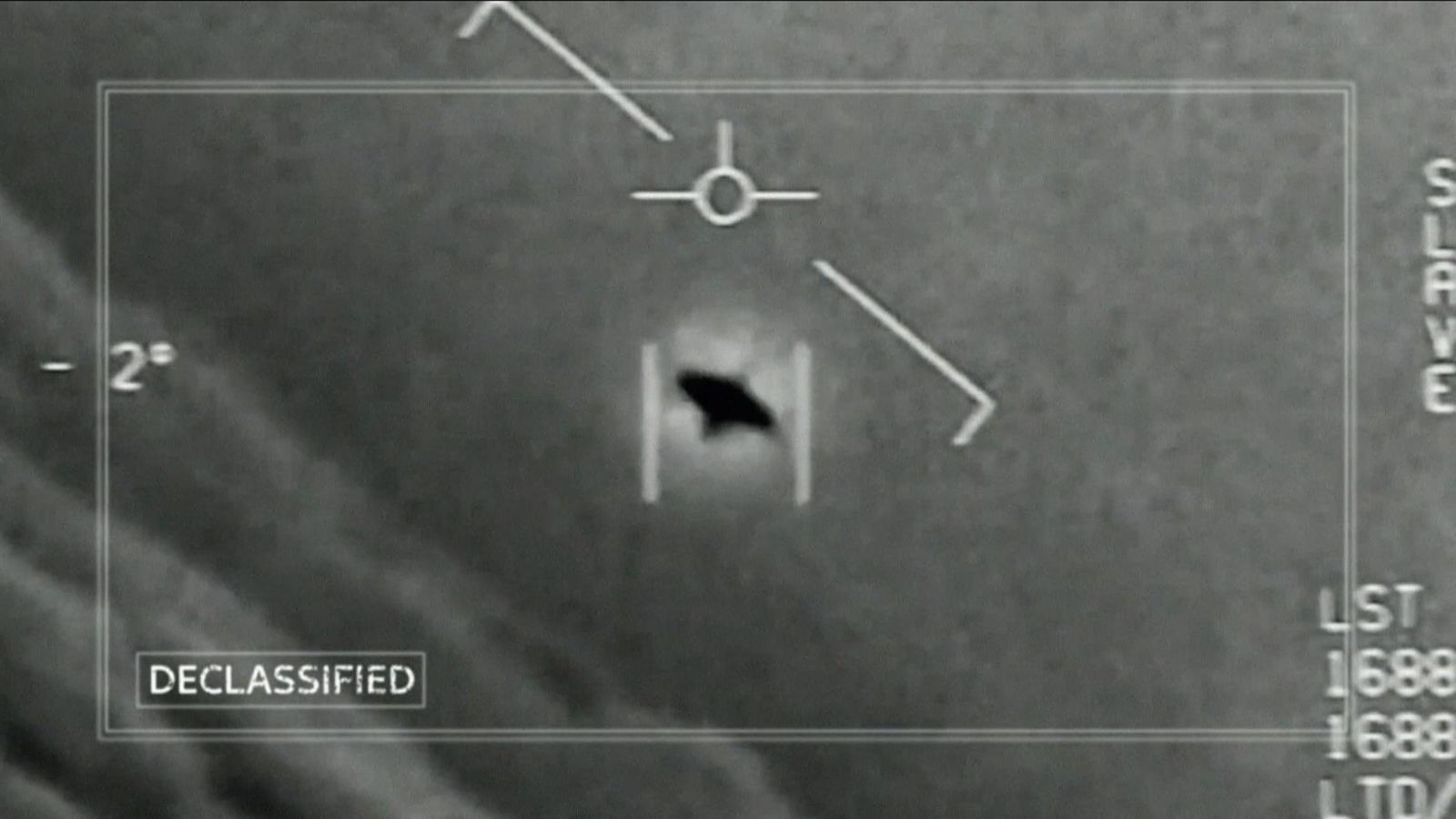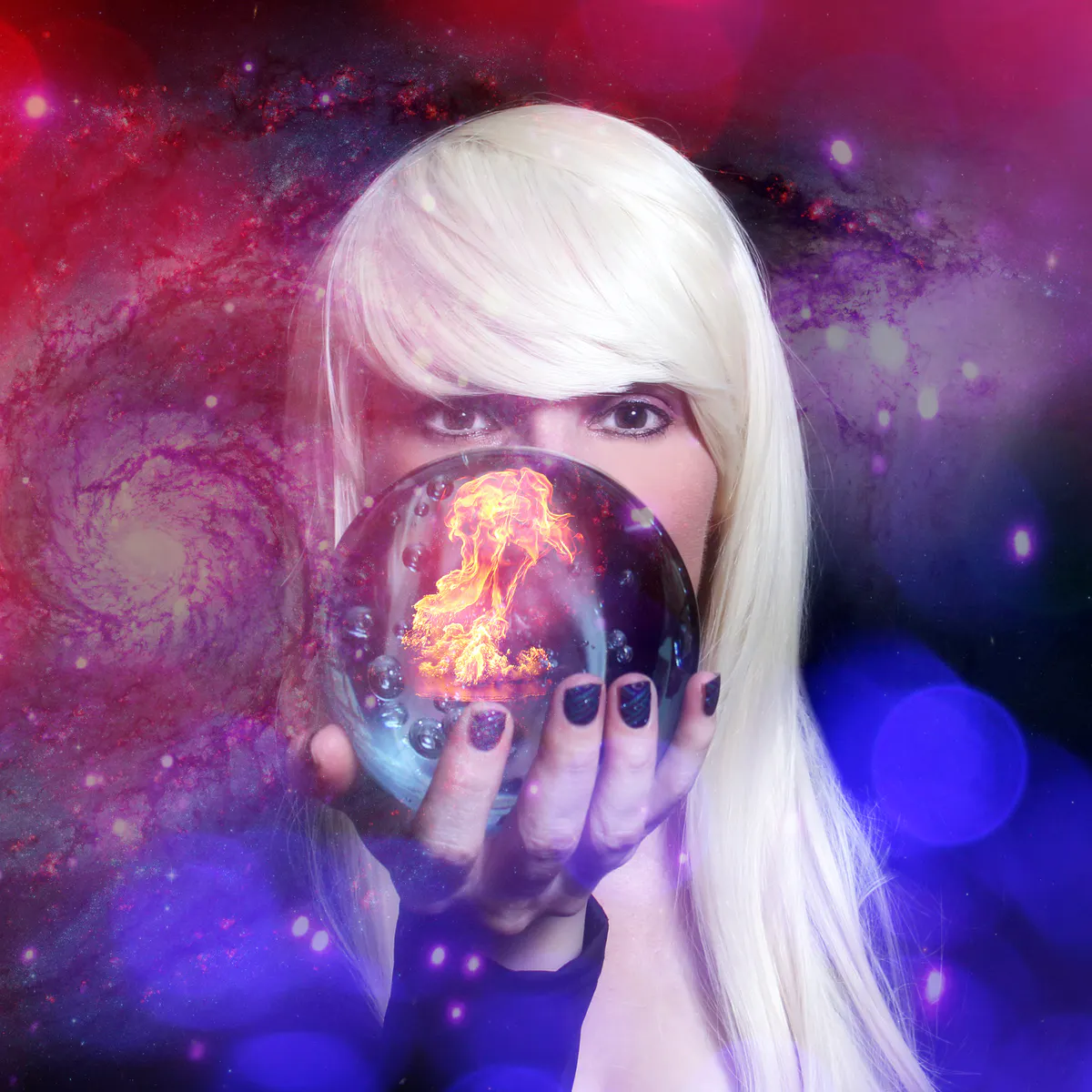10 Unexplained Phenomenas In The World of All Time
 |
| Top 10 unexplained phenomenas in the world of all time |
Humans have traveled to the moon and uncovered the secrets of the Taos Hum, the Devil's Kettle, and maybe even the pyramids of Egypt. But there are still plenty of phenomena that science can't explain yet.
Though scientists may have theories about the following phenomena, no one can say for certain why they occur.
Science is powerful, but there is much it can’t explain. And when people see, hear or believe something that is not explained, science finds itself trying to prove things don’t exist, and that’s truly impossible. In the following pages, you’ll learn more about some of the most common inexplicable phenomena — from ghosts to supposed man-like beasts, from incredible experiences at the line between life and death to amazing but unexplained feats of the mind itself.
The list of top 10 unexplained phenomenas in the world of all time
10. The Taos Hum
9. Bigfoot
8. Intuition
7. Mysterious Disappearances
6. Ghosts
5. Déjà vu
4. UFOs
3. Near-Death Experiences and Life After Death
2. Psychic powers and ESP
1. The Body/Mind Connection
What are the top 10 unexplained phenomenas in the world?
10. The Taos Hum
 |
| Photo: Live Science |
Taos is a small town in north-central New Mexico. To a passerby, it might not seem all that different from any other quiet American town. Listen carefully though, and you may find that Taos isn’t so quiet after all. Since the early 1990s, some residents and visitors of Taos have reported hearing a constant low-frequency buzzing or rumbling noise. We present to you the Taos Hum.
The Taos Hum has been described as a faint droning sound, similar to a diesel engine idling in the distance. It is a miserable noise for those that can hear it. It never stops, interferes with sleep, and is more noticeable at night and indoors.
The Hum became so bothersome to Taos residents that in 1993, locals voiced their concern about it to Congress. A public study was conducted to examine what could be going on. Residents were interviewed and various sound detection instruments were placed around the town.
The study found that only about 2 percent of Taos residents reported hearing the Hum. Many affected residents could replicate the sounds they heard, but no such signals were ever detected. The only unusual activity observed was elevated electromagnetic field levels, but this was determined to be the result of local power lines. No source of the Hum was ever identified.
So what really is causing this mystery Hum? Well, it’s important to remember that sound is all around us. Most of it goes unnoticed until we start paying attention to it, and there are easily hundreds of possible explanations. Most researchers do feel fairly certain that the Hum is real, though there is no consensus on a direct cause.
Industrial equipment is often the first suspected source of the Hum, as was the case in Bristol and Kokomo. Other possible explanations include high-pressure gas lines, electrical power lines and wireless communication devices. There’s also a theory that the Hum could be the result of low-frequency electromagnetic radiation which is only audible to some people. Other environmental factors have also been blamed, including seismic activity like microseisms, which are very faint, low-frequency tremors that can be generated by the action of ocean waves.
Of course, any time there is an unexplained phenomena in science, conspiracy theories are sure to follow.
Some believe the Hum is the result of military experiments or submarine communications. The High Frequency Active Auroral Research Program, or HAARP, has also been a popular target of conspiracy theorists. Some believe this government agency, which conducts research on Earth’s ionosphere, is conducting experiments which create the Hum (interestingly, conspiracy theorists also claim HAARP can manipulate weather).
9. Bigfoot
 |
| Photo: The New York Times |
The legends of Bigfoot go back beyond recorded history and cover the world. In North America – and particularly the Northwest – you can hear tales of seven-foot-tall hairy men stalking the woods, occasionally scaring campers, lumberjacks, hikers and the like.
Bigfoot is known by many titles with many different cultures although the name Bigfoot is generally attributed to the mountainous Western region of North America. The common name Sasquatch comes from the Salish Sasquits, while the Algonquin of the north-central region of the continent refer to a Witiko or Wendigo. Other nations tell of a large creature much like a man but imbued with special powers and characteristics. The Ojibway of the Northern Plains believed the Rugaru appeared in times of danger and other nations agreed that the hairy apparition was a messenger of warning, telling man to change his ways.
North American settlers started reporting sightings during the late 1800s and into the 1900s with the occasional finding of footprints, sporadic encounters and even a few grainy photos and videos adding to the mystery. Those who claim to have seen Bigfoot have described everything from a large, upright ape to an actual hairy human, sometimes standing over eight feet tall and described as powerfully built. The debate and research continue. Entire organizations exist to study and document Bigfoot and prove its existence and groups regularly search the Northwest woods, looking for that ultimate proof.
In one very real sense, however, Bigfoot does exist. The Western Air Defense Sector, Washington Air National Guard adopted the mascot of Bigfoot and operates 24 hours a day, seven days a week monitoring the skies of nearly 73 percent of the United States and Canada. Just like the Bigfoot of legend, the sector is rarely seen and rarely heard, but rest assured it continues to observe and – if necessary – serve as a messenger of warning.
8. Intuition
 |
| Photo: Design.org |
Intuition is a form of knowledge that appears in consciousness without obvious deliberation. It is not magical but rather a faculty in which hunches are generated by the unconscious mind rapidly sifting through past experience and cumulative knowledge.
Often referred to as “gut feelings,” intuition tends to arise holistically and quickly, without awareness of the underlying mental processing of information. Scientists have repeatedly demonstrated how information can register on the brain without conscious awareness and positively influence decision-making and other behavior.
Psychologists believe that intuition relies on powers of pattern-matching, as the mind combs experience stored in long-term memory for similar situations and presents in-the-moment judgments based on them. The automatic information processing that underlies intuition can be seen in the everyday phenomenon known as "highway hypnosis,” which occurs when a driver travels for miles without a conscious thought about the activity of driving the car.
Intuition, like first impressions, serves the brain’s need to predict and prepare for what will happen next. First impressions are rapid, holistic assessments of people based on subtle perceptual cues and judgment of intent to help or harm. Both rely on automatic processes and, as rapid evaluation systems, both are subject to error, especially from biases we hold.
7. Mysterious Disappearances
 |
| Photo: Getty Images |
People disappear for various reasons. Most are runaways, some succumb to accident, a few are abducted or killed, but most are eventually found. Not so with the truly mysterious disappearances. From the crew of the Marie Celeste to Jimmy Hoffa, Amelia Earhart, and Natalee Holloway, some people seem to have vanished without a trace. When missing persons are found, it is always through police work, confession, or accident never by 'psychic detectives'). But when the evidence is lacking and leads are lost, even police and forensic science can't always solve the crime.
One word about our next slide: Boo!
6. Ghosts
 |
| Photo: PNG Area |
One difficulty in scientifically evaluating ghosts is that a surprisingly wide variety of phenomena are attributed to ghosts, from a door closing on its own, to missing keys, to a cold area in a hallway, to a vision of a dead relative.
When sociologists Dennis and Michele Waskul interviewed ghost experiencers for their 2016 book "Ghostly Encounters: The Hauntings of Everyday Life" (Temple University Press) they found that "many participants were not sure that they had encountered a ghost and remained uncertain that such phenomena were even possible, simply because they did not see something that approximated the conventional image of a 'ghost.' Instead, many of our respondents were simply convinced that they had experienced something uncanny — something inexplicable, extraordinary, mysterious, or eerie."
Thus, many people who go on record as claiming to have had a ghostly experience didn't necessarily see anything that most people would recognize as a classic "ghost," and in fact they may have had completely different experiences whose only common factor is that it could not be readily explained.
Personal experience is one thing, but scientific evidence is another matter. Part of the difficulty in investigating ghosts is that there is not one universally agreed-upon definition of what a ghost is. Some believe that they are spirits of the dead who for whatever reason get "lost" on their way to The Other Side; others claim that ghosts are instead telepathic entities projected into the world from our minds.
Still others create their own special categories for different types of ghosts, such as poltergeists, residual hauntings, intelligent spirits and shadow people. Of course, it's all made up, like speculating on the different races of fairies or dragons: there are as many types of ghosts as you want there to be.
There are many contradictions inherent in ideas about ghosts. For example, are ghosts material or not? Either they can move through solid objects without disturbing them, or they can slam doors shut and throw objects across the room. According to logic and the laws of physics, it's one or the other. If ghosts are human souls, why do they appear clothed and with (presumably soulless) inanimate objects like hats, canes, and dresses — not to mention the many reports of ghost trains, cars and carriages?
If ghosts are the spirits of those whose deaths were unavenged, why are there unsolved murders, since ghosts are said to communicate with psychic mediums, and should be able to identify their killers for the police? The questions go on and on — just about any claim about ghosts raises logical reasons to doubt it.
 Top 10 Most Mysterious People In The World Top 10 Most Mysterious People In The World There are things on earth that we have never found out, as for the list of the 10 most mysterious people in the world right ... |
5. Déjà vu
 |
| Photo: Youtube |
“Déjà vu” describes the uncanny sensation that you’ve already experienced something, even when you know you never have.
Say you go paddleboarding for the first time. You’ve never done anything like it, but you suddenly have a distinct memory of making the same arm motions, under the same blue sky, with the same waves lapping at your feet.
Or perhaps you’re exploring a new city for the first time and all at once feel as if you’ve walked down that exact tree-lined footpath before.
It’s often nothing to worry about. Although déjà vu can accompanyTrusted Source seizures in people with temporal lobe epilepsy, it also occurs in people without any health issues.
There’s no conclusive evidence on how common it actually is, but varying estimates suggest anywhere between 60 and 80 percent of the population experience this phenomenon.
While déjà vu is fairly common, especially among young adults, experts haven’t identified a single cause. (It’s probably not a glitch in the Matrix.)
Researchers can’t easily study déjà vu, partially because it happens without warning and often in people without underlying health concerns that might play a part.
What’s more, déjà vu experiences tend to end as quickly as they begin. The sensation may be so fleeting that if you don’t know much about déjà vu, you may not even realize what just happened.
You might feel a bit unsettled but quickly brush off the experience.
Experts suggest several different causes of déjà vu. Most agree it likely relates to memory in some way. Below are some of the more widely accepted theories.
4. UFOs
 |
| Photo: Sky News |
An unidentified flying object (UFO) is any perceived aerial phenomenon that cannot immediately be identified or explained. Most UFOs are identified or investigated as conventional objects or phenomena. The phrase was coined as an acronym by Project Blue Book project head Edward J. Ruppelt, but today UFO is widely used as a stand-in for extraterrestrial spacecraft-aircraft that people claim to have observed. Many UFOs are described as being flying saucers, as is shown in the image to the right.
Studies and investigations into UFO reports have been conducted by governments, other organisations, and private individuals. In the United States, studies began in the late 1940s and have included Project Grudge, Project Sign and Project Blue Book. The latter ended in 1969–1970 after the Condon Committee concluded that the subject failed to merit further study.
Unidentified lights and flying objects have been reported for much of human history. Skeptics including scientists, and organizations such as the Committee for Skeptical Inquiry, state that UFOs are conventional objects or phenomena, while "Ufologists" favour unconventional hypotheses. UFOs are a worldwide cultural phenomenon, appearing in fictional movies, television and other media. UFO reports continue to appear in news media.
 10 Biggest Secrets And Mysteries In The World Of All Time 10 Biggest Secrets And Mysteries In The World Of All Time The world has some of the best mysteries, and many of them still remain unsolved. Here is top 10 biggest secrets and mysteries of all ... |
3. Near-Death Experiences and Life After Death
 |
| Photo: Getty Images |
A near-death experience (NDE) is a profound personal experience associated with death or impending death which researchers claim share similar characteristics. When positive, such experiences may encompass a variety of sensations including detachment from the body, feelings of levitation, total serenity, security, warmth, the experience of absolute dissolution, and the presence of a light. When negative, such experiences may include sensations of anguish and distress.
Explanations for NDEs vary from scientific to religious. Neuroscience research hypothesizes that an NDE is a subjective phenomenon resulting from "disturbed bodily multisensory integration" that occurs during life-threatening events, while some transcendental and religious beliefs about an afterlife include descriptions similar to NDEs.
The equivalent French term expérience de mort imminente (experience of imminent death) was proposed by French psychologist and epistemologist Victor Egger as a result of discussions in the 1890s among philosophers and psychologists concerning climbers' stories of the panoramic life review during falls. In 1892 a series of subjective observations by workers falling from scaffolds, war soldiers who suffered injuries, climbers who had fallen from heights or other individuals who had come close to death (near drownings, accidents) was reported by Albert Heim. This was also the first time the phenomenon was described as clinical syndrome. In 1968 Celia Green published an analysis of 400 first-hand accounts of out-of-body experiences. This represented the first attempt to provide a taxonomy of such experiences, viewed simply as anomalous perceptual experiences, or hallucinations. In 1969, Swiss-American psychiatrist and pioneer in near-death studies Elisabeth Kubler-Ross published her book On Death and Dying: What the dying have to teach doctors, nurses, clergy, and their own families. These experiences were also popularized by the work of psychiatrist Raymond Moody, who in 1975 coined the term "near-death experience" as an umbrella term for the different elements (out of body experiences, the "panoramic life review", the Light, the tunnel, or the border). The term "near-death experience" had already been used by John C. Lilly in 1972.
Bruce Greyson (psychiatrist), Kenneth Ring (psychologist), and Michael Sabom (cardiologist), helped to launch the field of near-death studies and introduced the study of near-death experiences to the academic setting. From 1975 to 2005, some 2,500 self-reported individuals in the US had been reviewed in retrospective studies of the phenomena with an additional 600 outside the US in the West, and 70 in Asia. Additionally, prospective studies had identified 270 individuals. Prospective studies review groups of individuals (e.g., selected emergency room patients) and then find who had an NDE during the study's time; such studies cost more to perform. In all, close to 3,500 individual cases between 1975 and 2005 had been reviewed in one or another study. All these studies were carried out by some 55 researchers or teams of researchers.
Melvin Morse, head of the Institute for the Scientific Study of Consciousness, and colleagues have investigated near-death experiences in a pediatric population.
2. Psychic powers and ESP
 |
| Photo: Pinterest |
Mind reading and the ability to predict the future are not skills people generally associate with the human race. Yet, research shows many people genuinely believe in the existence of psychic powers.
You would think that instances of proven psychic fraud over the years would weaken the credibility of psychic claims. There have been historical cases, such as Lajos Pap, the Hungarian spiritualist medium, who was found to be faking animal appearances at seances. And then more recently, self described psychic James Hydrick was revealed as a trickster. Hydrick confessed his paranormal demonstrations were tricks learned in prison.
Another notable example involved televangelist Peter Popoff. His wife used a wireless transmitter to broadcast information about sermon attendees to Popoff via an earpiece. Popoff claimed to receive this information by paranormal means and rose to fame hosting a nationally televised programme, during which he performed seemingly miraculous cures on audience members.
But despite such cases, there are still many people who firmly believe in the power of psychic ability. According to a US Gallup survey, for example, more than one-quarter of people believe humans have psychic abilities – such as telepathy and clairvoyance.
1. The Body/Mind Connection
 |
| Photo: iStock |
Mind-Body Connection is the belief that the causes, development and outcomes of a physical illness are determined from the interaction of psychological, social factors and biological factors.
Your emotional health includes:
• your overall psychological well-being;
• your feelings about yourself;
• the quality of your relationships, at work and at home;
• your ability to create and use positive coping skills;
• your ability to manage your feelings.
Emotional health can be affected by the stress from both good and bad life events like marriage/divorce, promotion/lay-off or the purchase of a house/home foreclosure. It also can be affected by daily routines such as fighting rush hour traffic, meeting a deadline, unrealistic self-expectations, and interpersonal relationships.
And your body responds to this stress and to anxiety or depression. For example, when you’re stressed—even by something positive—you might develop high blood pressure, a stomach ulcer, back pain, constipation or diarrhea, fatigue, headaches, shortness of breath, and you may have trouble falling or staying asleep.
 10 Biggest Secrets And Mysteries In The World Of All Time 10 Biggest Secrets And Mysteries In The World Of All Time The world has some of the best mysteries, and many of them still remain unsolved. Here is top 10 biggest secrets and mysteries of all ... |
 Top 10 Most Intelligent Animals On Planet Top 10 Most Intelligent Animals On Planet There are a lot of beautiful animals on our planet, and some of them demonstrate extraordinary abilities. Check out the 10 most intelligent animals in ... |
 Top 10 Best Educated Hollywood Actors Top 10 Best Educated Hollywood Actors There are several actors in Hollywood who have attained world acclaim for their superior acting skills and the ability to entertain world audiences. Check out ... |
 Top 10 Best Educated Hollywood Actresses Top 10 Best Educated Hollywood Actresses Some of the celebrities of hot and sexy women have achieved a high level of education. Check out right below the 10 best Hollywood actresses ... |


























